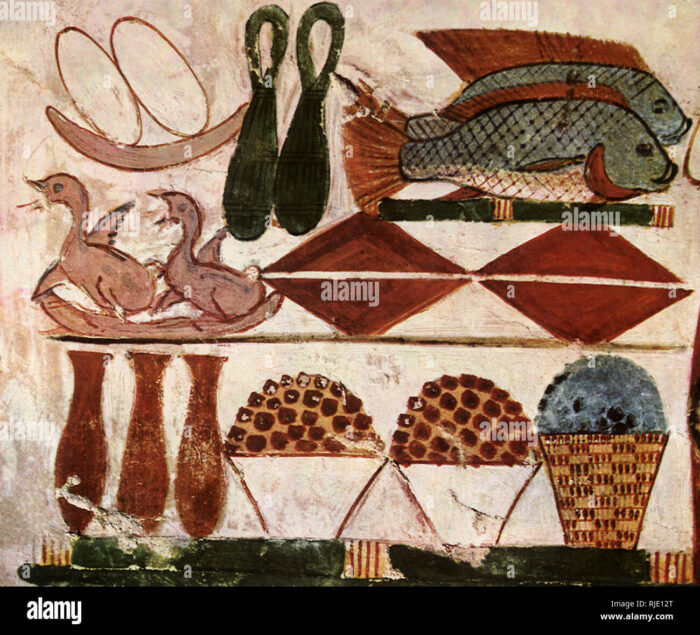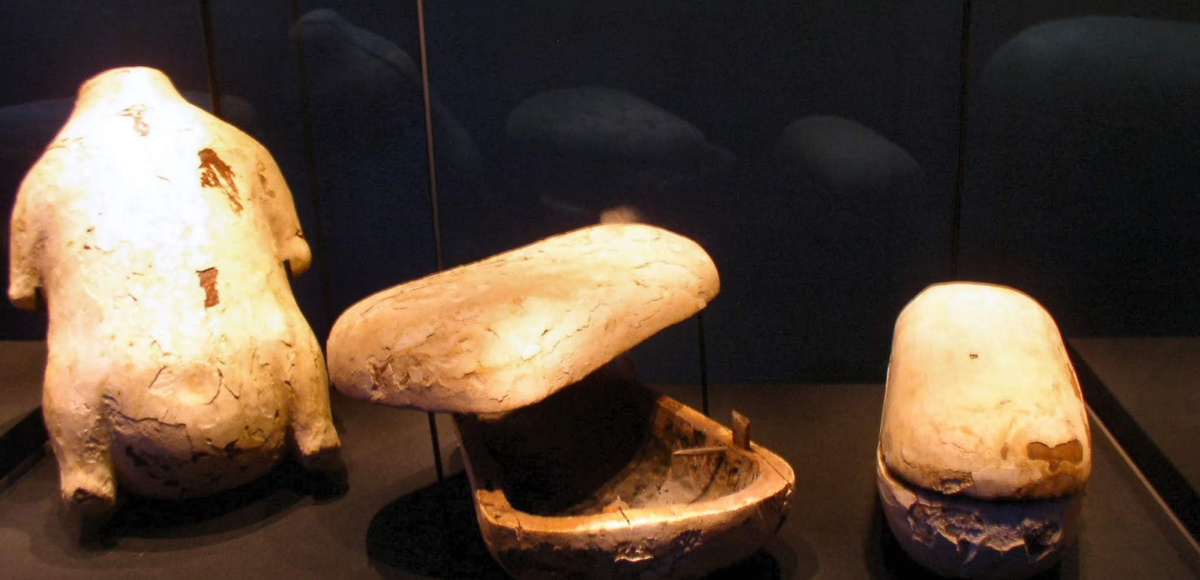Since people began excavating ancient Egyptian tombs, more and more mysteries have been solved about ancient Egyptian mummies and the traditional burial rituals. While the ancient Egyptian belief in the afterlife was revealed to the public, how many people would actually ask the question: what did they eat after death?
Let’s play a game to find out facts about foods in tombs!

Here’s the rule!
- You are now in Ancient Egypt
- You are a servant
- Your mission is to prepare food offerings in tombs
“Why should you prepare food for a dead man?”
Think!!! What do you eat in the “afterlife”?
YES!!! YOU HAVE TO EAT. The ancient Egyptians believed that food, clothing, and shelter there would still require some proper replenishment through the real world. This question is critical, especially for people like the pharaohs who enjoyed a lifetime of glory and wealth, their subjects all agreed that the food consumed by the pharaohs after death should be the same as when they were alive!!! Therefore the ancient Egyptian people would make food in large quantities and bury it with the pharaohs in various forms.
Before you Start…Choose your identity!
- servant of a high official.
- servant of Pharoah.
Ready?! Let’s get you familiar with what you are doing
Now, follow me if you choose Option 1.
In this section, you learn how to prepare food for high officials after they die.
Yes!! Surprise! Not only Pharoah gets food after death, people weren’t left without food after death. But of course, preparation for the Pharoah is much fancier and more complicated. But thankfully, your wise choice saved you these troubles.
There are two ways you can prepare the food. Here’s an example of method 1: Store the real food properly within the tomb.
This image is a relief from the tomb of an ancient Egyptian official named Nakht, a scribe and astronomer during the reign of Thutmose IV, depicting the food he enjoyed during his lifetime and the food he wanted to take with him to the afterlife. Nakht was a great lover of wine, as can be seen from the picture, which details the process of growing grapes and making wine from feet, as well as showing the vessels used to store the wine.
So obviously, if you are to prepare food for this man, all you need to do is massively produce wine and store them together with his body.
One of the other ways the ancient Egyptians provided food to the afterlife was by placing an offering table representing various food in the tombs. From the Offering Table of the Overseers of Scribes Senbebu and Dedusobek, we can clearly see the role of this offering table in the tomb. In the middle of this plate is a picture of food and wine, and below it is an opening facing the direction of the body, signifying that the food would be consumed by the owner through this little tunnel. On the outside, there are hieroglyphs facing the other direction, describing the recipe for the food, which is easy for visitors to read.
If you picked Option 2… There’s much more!
Pharaoh needs a lot more food!!! Just to give you an idea, guess what’s in King Tutankhamun’s tomb?
Everything from condiments, appetizers, entrees, and drinks- so that he could enjoy whatever he wanted at any time in his afterlife. Now, since Pre-cooked and pre-packed meat cut from the full legs of animals is also included, another technique to mummify meat and store them in poultry was also invented.
In this process, a kind of sap related to the pistachio tree that the ancient Egyptians considered to be a preservative is required. And it was found applied in large quantities to the meat in the tombs of King Tutankhamun. But the pistachio tree was extremely valuable and was mostly imported from what is now Syria and Lebanon.
But, as always, if you are too stressed making food for your king, the offering table is there for you.
Check out the offering table of the Nubian King Nastasen, where we can clearly see the king’s food preferences during his lifetime and the food choices he wanted to bring to the afterlife. At the bottom is bread, in the middle are various kinds of geese, cow legs(meat from legs of animals were believed to be the best part), some small fruits, and at the top is a lotus flower, also suggesting that the Nubians came from the southern part of Egypt.
Good Job and now, good luck with your food offering plan!
Hello! My name is Jacky Zhang and I’m a sophomore majoring in Art&Art History. I was intrigued by our discussions in class about the Egyptian rituals of the afterlife. But I have never considered food supply in afterlife was indeed a significant component of their belief. So I made this web post, trying to share this surprising discovery with people who are interested in this concept.
